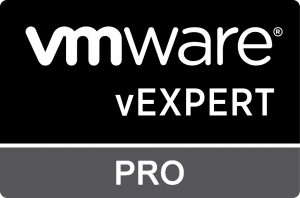Working with VSA, here are some gotchas and dvance configs to note when troubleshooting issues involving the setup.
1. Disable Proxy Arp in layer 3 if the VSA Manager and ESXi hosts are in different network.
During VSA Cluster creation, the setup would ping each of the IP’s to be used by the appliance and NFS mounts. Since the proxy arp setting in the layer 3 “proxies” replies to any unused IP, this would result in a IP conflict error during the setup.
Here is Cisco’s explanation of the setting.
2. To enable SSH on the VSA appliance, login using the default username and password: svaadmin : svapass .
Type the following
sudo su
sshon
3. If the VSA Manager and ESXi hosts sits between a firewall, get ready for a lot of headaches. I suggest you follow the FW list in the following KB: http://kb.vmware.com/kb/2047154
4. If the copy of the vApps from VSA Manager to ESXi takes a long time (esp true for remote sites), you may need to pre-copy the OVFs manually to the remote ESXi first before doing the setup. This will help save alot of time.
To do this, go to C:\Program Files\VMware\Infrastructure\tomcat\webapps\VSAManager\ovf copy the OVF’s into the local storage of the ESXi hosts under a folder vsa-ovf (create manually).
5. To customize VSA Appliance deployment process you can switch the following configs
– Go to dev.properties file @ C:\Program Files\VMware\Infrastructure\tomcat\webapps\VSAManager\WEB-INF\classes in your VSA Manager installation.
– After editing the file, restart VMware Webservices Service for it to take effect
===
# Network configuration on host and
SVA. network.config=true
# HA configuration. If true, creates a HA Cluster and moves the host into them
ha.config=true
# EVC configuration. If true, configures EVC mode on HA cluster. Should be false if ha.config is false.
evc.config=true
# EVC baseline configuration. Can be set to highest or lowest. Lowest is default behavior
# If highest, calculates and sets EVC mode to lowest common denominator (highest possible)
evc.config.baseline=lowest
# Variable disk size configuration for importing VM
# if disk.size.default is true, default value will be used
disk.size.default=false
# Minutes to detect svaservice
svaservice.detect.time=3 #<- If svaservice within vApps takes a long time to start, you may need to increase this value
# Install tool
vc.dev.api.version=dev2
vc.release.api.version=5.0
# Turn off this flag at beta1
vc.dev.api.version.allow=false
# Other operations
host.audit=true
vm.rollback=true # <- Set to False if you don’t want VSA Manager to delete the vApps after a failed installation. For troubleshooting purpose.
vm.config=true
test.on=false
# OVF file relative path under <vctomcat>\…\SVAManager
ovf.local=true
ovf.relative.path=/ovf/sva_OVF10.ovf
ovf.url= http://<SVA OVF link>
# Number of log bundles to keep on VC machine.
log.bundle.count=10
# Number of VSAManager logs to keep on VC machine. Default is 30 days and must be set greater than or equal to 1.
log.count=30
messaging.service.timeout.conn.ms=60000
messaging.service.timeout.socket.ms=300000
# Use WSCLI commands during log collection
log.collection.usewscli=true
#Enable or disable synchronous cluster context initialization
vsa.syncContextInit=false
Thats it.. hope I’ve helped you with the trouble you might encounter with the product.
Feel free to comment.




